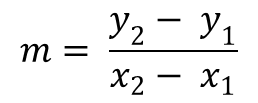We have known about the difference quotient for a long time now; in fact, it is often included in our tests. However, we really didn't know where it came from until we reached the last unit- Unit V! So let's take a closer look at how the difference quotient is derived.
Based on the first few concepts, we know that the difference quotient is only a part of the process when trying to find the derivative (the slope of tangent lines).
| http://t3.gstatic.com/images?q=tbn:ANd9GcQx-jY-1cjcu_PSC9gGtoDW4qMYafVwaqWw8Qt5qV_gQpIKlz5w:cis.stvincent.edu/carlsond/ma109/DifferenceQuotient_images/IMG0470.JPG |
 |
| http://t2.gstatic.com/images?q=tbn:ANd9GcSmctLWns4VWjJOvK672RQnfSPeu-73rvYghAvuGT_HhHTEhVRY3w:education-portal.com/cimages/multimages/16/Slope_formula_2.png |
We continue to find the difference quotient by using the slope formula as shown above. After plugging in the values based on the slope formula we get [ f(x+h)-f(x)/ x+h-x]. Since the "x" in the denominator cancel out, we only have to simplify it to get [f(x+h) -f(x)/ h]....the difference quotient!!
Like I mentioned before, the difference quotient can be used to find the slope of a tangent line, which only touches the function once. We do not have to rely on the secant line because it touches the function twice. As a matter of fact, the reason why we try to find the limit as h approaches 0 is because we want "h" to be as close as possible to 0 so that both points can meet at one point instead of two like the secant line).
No comments:
Post a Comment